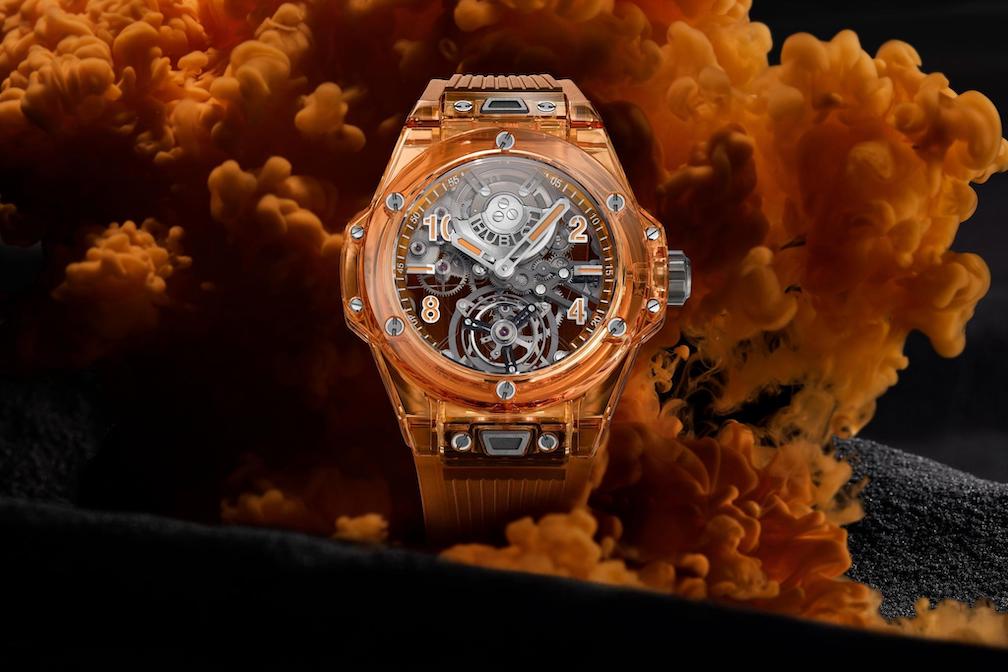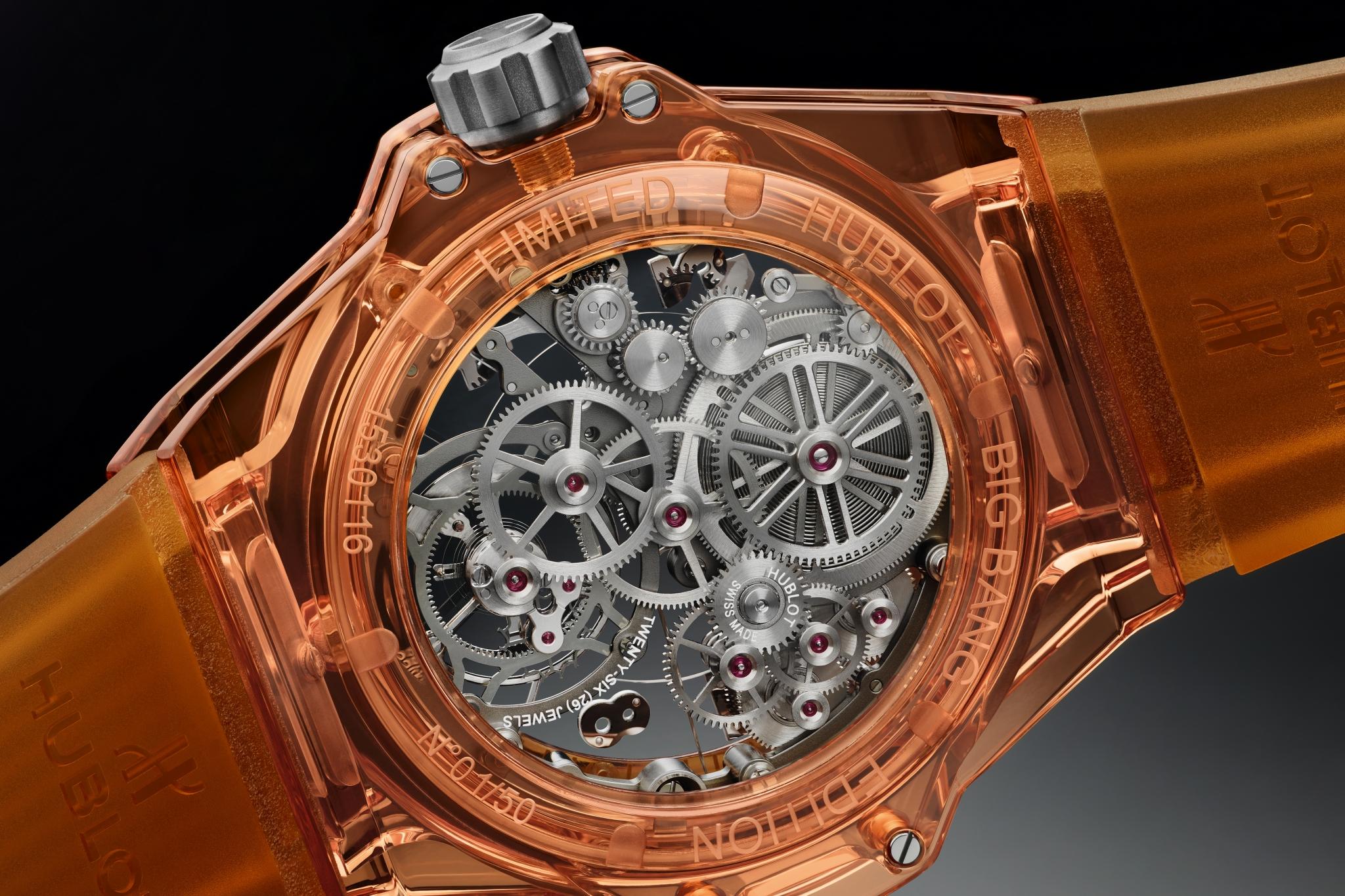
Hublot Big Bang Tourbillon Automatic Orange Sapphire with new movement and world’s first orange sapphire.
It is no secret that Swiss watch brand Hublot loves to be different. Its tag line, The Art of Fusion, is all about fusing different elements in design, material and even movements. This often make the brand first when it comes to certain arenas. This year is no exception. In addition to a myriad of new complications and women’s watches the brand showcased at LVMH Watch Week, Hublot unveiled a world’s first: orange sapphire. This was no easy feat. Just developing the color alone took two years. But the brand couldn’t release a world’s first sapphire and use an existing movement so Hublot chocked the new watch, the Big Bang Tourbillon Automatic Orange Sapphire, with a movement that was three years in the development stages.
According to Hublot CEO Ricardo Guadalupe, the brand is always about pushing the envelope of creativity. “We need to push the boundaries and reinvent materials and complications. Then, when we fuse these together, wonderful things happen.”
Hublot was one of the first to use sapphire cases but instead of turning to individual companies that mill these cases for other brands, Hublot opted to learn how to industrialize sapphire and create the cases in house in its research and development laboratories. I’ve been fortunate enough to get inside Metallurgy and New Materials portion of the R&D lab and it is a bit like sci-fi thanks to the heating tanks, the equipment, the scientists in lab coats and more. As such, it comes as no surprise to me that over the course of the past five years, since the brand industrialized its own sapphire in 2016, it also was first to create colors.

Hublot Big Bang Tourbillon Automatic Orange Sapphire retails for $169,000.
“Sapphire is very difficult to work with,” says Guadalupe. ”It is very hard but it is also very fragile and can break during the manufacturing process. But it was important to us to introduce bold colors. We went from clear to black, bright blue, red, yellow and now orange. It was a long process to get to orange and took almost two years to develop the color.”
This world’s first bright orange hue (achieved by adding elements such as chromium and titanium oxide) enables a breathtaking view of what’s inside, and so it deserves a special caliber. “We knew we wanted to house a tourbillon inside, but we wanted a new tourbillon movement. The Automatic Tourbillon let us totally reinvent the escapement so that we could use a micro-rotor in a decorative manner by moving it to the dial side,” says Guadalupe. “This way the movement participates in the design of the watch.”
The Big Bang Tourbillon Automatic Orange Sapphire’s MHUB6035 movement is a first for Hublot, as well. Moving away from a manually wound tourbillon escapement, Hublot endows the watch with a new 243-part caliber with micro-rotor on the dial side. For the first time for the brand, as well, it turns to clear sapphire for the barrel bridge, the automatic bridge and the tourbillon barrette to yield an unobstructed view inside. Just 50 pieces will be made, each retailing for $169,000.
For those who want a more toned-down Big Bang Tourbillon Automatic, Hublot is offering a limited edition of 100 pieces in Texalium®. The 45mm watch is crafted in a lightweight material that is exclusive to the brand and combines carbon fiber with aluminium. There is also a 100-piece limited edition Black Magic version being released in high-tech black ceramic that Hublot has perfected to make it impervious to water damage.

Ricardo Guadalupe, CEO of Hublot.
According to Guadalupe, Hublot is focusing its attentions on expanding creativity of movements to make them more user friendly and more in line with what consumers want. This is why the brand opted to create the automatic tourbillon caliber. We also discussed some other projects on the drawing board so we may be seeing additional firsts this year.
(This article by Roberta Naas first appeared on her column on Forbes.com)





